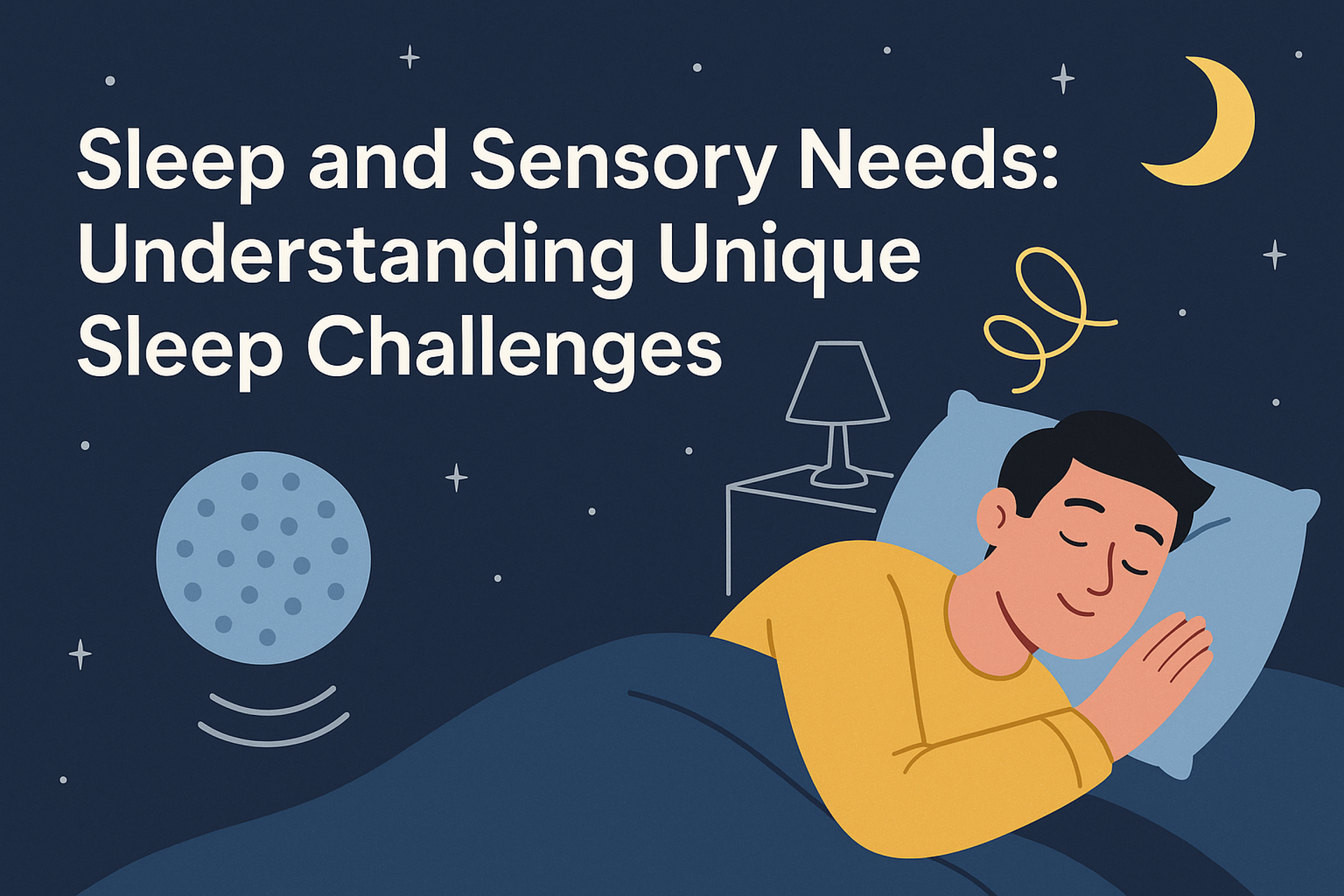Sleep and Sensory Needs: Understanding Unique Sleep Challenges
Helping adults with learning disabilities and autism rest well
Sleep is a cornerstone of health and wellbeing for everyone—but for adults with learning disabilities and autism, achieving a good night’s rest can be a unique challenge. Carers and support workers play a vital role in helping individuals feel safe, regulated, and relaxed enough to fall asleep and stay asleep.
In this article, we explore the connection between sensory needs and sleep, common sleep difficulties, and practical, person-centred strategies that can make a real difference.
Why Sleep Can Be Challenging
Many adults with learning disabilities and autism experience difficulties with:
Falling asleep
Staying asleep
Waking very early
Poor sleep quality
These issues can stem from a mix of sensory sensitivities, communication differences, anxiety, or neurological factors. A person’s bedroom environment, daily routine, and emotional state can all contribute to how well they sleep.
Understanding Sensory Needs and Sleep
Sensory processing differences affect how someone experiences sounds, light, textures, smells, and body sensations. For example:
Hypersensitivity: Over-responsiveness to stimuli like noise, bright lights, or itchy bedding.
Hyposensitivity: Under-responsiveness, where someone may seek out movement, pressure, or sensory input to feel calm enough to sleep.
Sleep disturbances can occur when sensory needs aren’t fully understood or supported.
Positive, Person-Centred Strategies for Better Sleep
Here are practical steps support workers can take to help service users feel comfortable, secure, and ready for rest:
1. Create a Calming Sleep Environment
Use blackout curtains or eye masks for those sensitive to light.
Consider white noise machines, earplugs, or soft music to block disruptive sounds.
Use weighted blankets (with OT guidance) or soft, breathable bedding for comfort.
Allow individuals to choose calming scents like lavender if they enjoy smells.
💡 Tip: Let the person explore different fabrics, lighting levels, or room arrangements to discover what works best for them.
2. Build a Consistent Bedtime Routine
Keep bedtimes and wake-up times consistent—even on weekends.
Include calming activities in the hour before bed: reading, soft music, warm baths.
Avoid screens and stimulating activities at least 30 minutes before sleep.
💡 Tip: Use visual schedules, social stories, or calming picture cards to support understanding and reduce anxiety.
3. Support Daytime Regulation
Good sleep starts during the day. Ensure:
Access to physical activity, especially outdoors.
Opportunities for sensory regulation: swings, walks, fidget tools, or quiet time.
Healthy food and hydration—avoid caffeine and excess sugar later in the day.
💡 Tip: For people with hyposensitivity, sensory-rich daytime input may reduce bedtime restlessness.
4. Work in Partnership with the Individual
Learn how the person communicates tiredness, anxiety, or discomfort.
Involve them in choosing bedding, bedtime clothing, and routines.
Respect their preferences—some may feel safest with a light on or door open.
💡 Tip: If the person uses non-verbal communication, observe behaviours closely and note patterns over time.
5. Work Collaboratively with Families and Health Professionals
Consult with families about what has worked in the past.
Seek input from occupational therapists or sleep clinics where needed.
Keep a sleep diary to track progress and identify triggers.
💡 Tip: Don’t try to “fix” sleep overnight. Small changes and patience lead to long-term success.
Celebrate Progress, Not Perfection
Remember: each person’s sleep journey is different. Even small improvements in sleep length or quality can lead to better mood, behaviour, and overall wellbeing. Be gentle, curious, and flexible in your approach. Celebrate the wins, no matter how small.
Final Thoughts
Supporting adults with learning disabilities and autism around sleep is an act of deep care and understanding. By recognising and respecting sensory differences, building trusting relationships, and creating predictable environments, carers can make a profound impact on the lives of those they support.
🌙 Rest is a right—and with the right support, it's within reach

